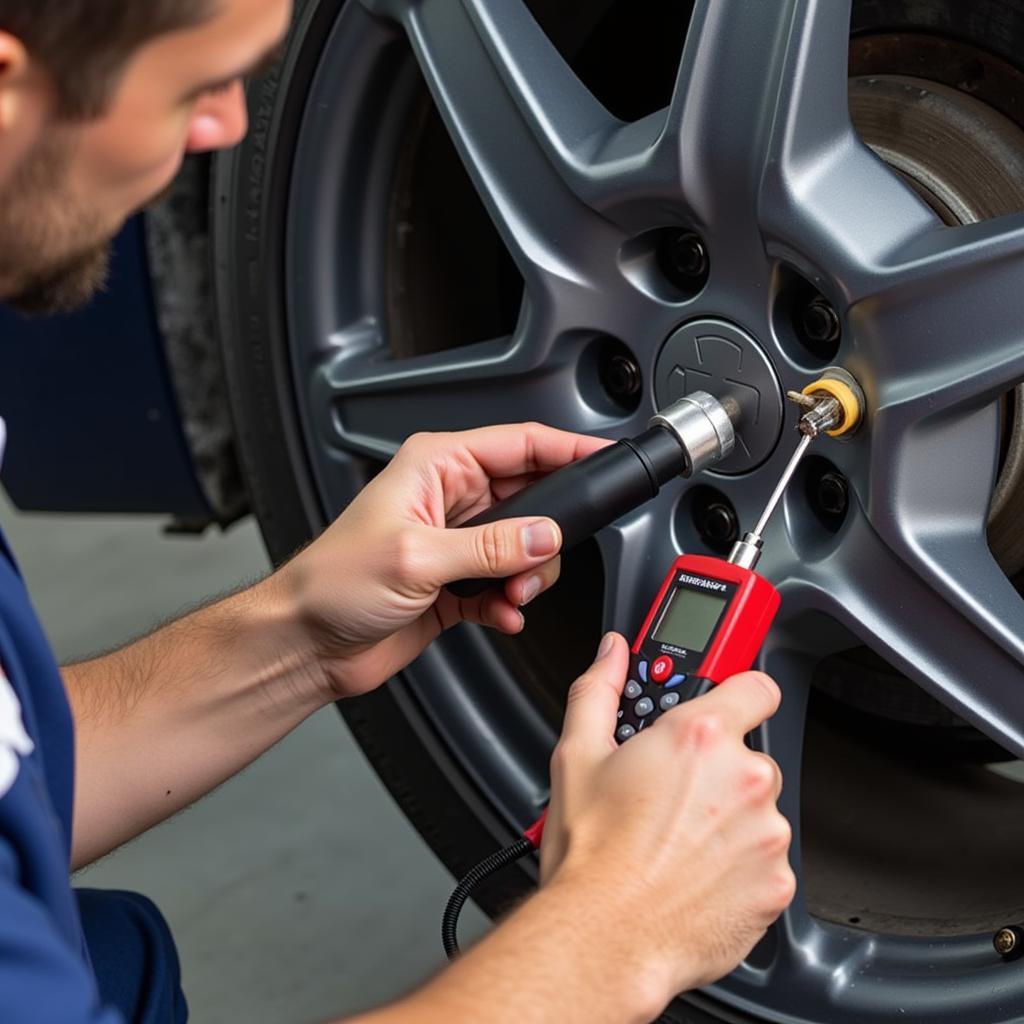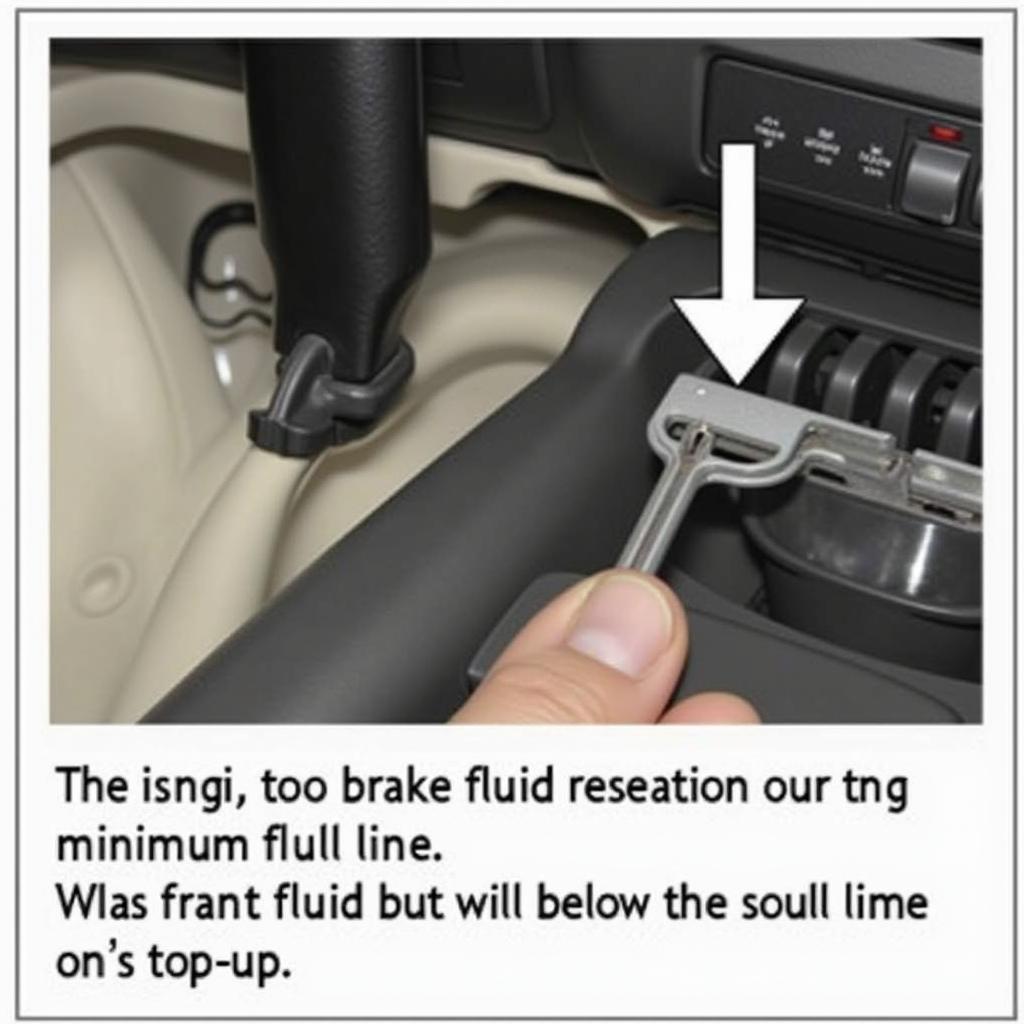The AdBlue warning symbol on your dashboard means that there’s a problem with your vehicle’s AdBlue system. AdBlue is a urea-based solution that’s injected into the exhaust system of diesel vehicles to reduce nitrogen oxide (NOx) emissions. This warning symbol can be a bit alarming, but don’t panic! It’s usually a relatively easy fix.
Why is the AdBlue Warning Symbol On?
There are several reasons why your AdBlue warning symbol might be on, including:
- Low AdBlue levels: The most common reason for the AdBlue warning symbol is that you’re running low on AdBlue. This is usually a simple fix, just add more AdBlue to your vehicle.
- Faulty AdBlue sensor: If your AdBlue sensor is malfunctioning, it might be sending a false signal that you’re running low on AdBlue. This could trigger the warning symbol even though your AdBlue tank is full.
- AdBlue system blockage: If your AdBlue system is clogged or blocked, it might not be able to inject the solution into your exhaust system correctly.
- AdBlue pump malfunction: A malfunctioning AdBlue pump could prevent the system from injecting AdBlue into your exhaust system.
- AdBlue injector problem: If your AdBlue injector is not working properly, it might not be injecting the solution into the exhaust system, leading to a warning symbol.
How to Fix the AdBlue Warning Symbol
Here’s a step-by-step guide on how to fix the AdBlue warning symbol, depending on the cause:
1. Check Your AdBlue Levels
The most straightforward way to address the warning symbol is to check your AdBlue levels. Your vehicle’s owner’s manual will provide specific instructions on how to check your AdBlue level.
If you’re running low on AdBlue, simply add more to your vehicle’s tank. You can buy AdBlue at most gas stations and auto parts stores.
Here are some helpful tips for adding AdBlue:
- Make sure you use the correct AdBlue: There are different types of AdBlue on the market, so ensure you use the type that’s compatible with your vehicle. Check your vehicle’s owner’s manual or consult with a mechanic.
- Add the AdBlue slowly: It’s crucial to avoid overfilling the AdBlue tank. Overfilling can damage your system.
- Check the AdBlue warning symbol after adding AdBlue: After topping off your AdBlue, check the warning symbol to see if it’s gone. It might take a few minutes for the system to reset.
2. Address a Faulty AdBlue Sensor
If you’ve added AdBlue, and the warning symbol remains, it might be a problem with the AdBlue sensor. You’ll need to have your vehicle diagnosed by a qualified mechanic. They can check the sensor’s readings and determine if it needs to be replaced.
3. Clear a Blockage in the AdBlue System
If the AdBlue system is blocked, you’ll need to have it cleaned by a mechanic. They can inspect the system for any blockages and clear them.
4. Troubleshoot a Malfunctioning AdBlue Pump
A malfunctioning AdBlue pump can be a bit more complex. You’ll need to have it diagnosed by a qualified mechanic. They can test the pump and determine if it needs to be replaced.
5. Repair a Faulty AdBlue Injector
A faulty AdBlue injector requires the attention of a skilled mechanic. They can inspect the injector and determine if it needs to be repaired or replaced.
What Happens If You Ignore the AdBlue Warning Symbol?
Ignoring the AdBlue warning symbol can lead to several issues, including:
- Reduced engine performance: If your vehicle isn’t getting enough AdBlue, it might run poorly or lose power.
- Increased emissions: If your AdBlue system isn’t working properly, your vehicle will emit more pollutants.
- Damage to your catalytic converter: A lack of AdBlue can damage your catalytic converter, leading to costly repairs.
- Engine light: A warning light might illuminate on your dashboard, indicating that your AdBlue system needs attention.
- Restricted driving: In some cases, your vehicle might even go into limp mode, restricting its performance and ability to drive.
How to Prevent the AdBlue Warning Symbol
Here are some helpful tips to prevent the AdBlue warning symbol from appearing:
- Keep your AdBlue tank full: Adding AdBlue regularly helps prevent the warning symbol from appearing.
- Avoid using low-quality AdBlue: Using poor-quality AdBlue can damage your AdBlue system.
- Have your AdBlue system serviced regularly: Regular servicing of your AdBlue system can help prevent issues and keep it running smoothly.
FAQs
Q: How often should I add AdBlue?
A: The frequency of AdBlue additions depends on your driving habits and the size of your vehicle’s tank. You should check your owner’s manual for specific recommendations.
Q: Can I use water instead of AdBlue?
A: No, using water instead of AdBlue is not recommended and could damage your AdBlue system. AdBlue is specifically designed to reduce NOx emissions, and water is not a suitable substitute.
Q: Can I reset the AdBlue warning symbol myself?
A: While it’s possible to reset the AdBlue warning symbol manually on some vehicles, it’s not recommended to do so without consulting a mechanic. Resetting the warning symbol without addressing the underlying issue could lead to more significant problems.
Q: What’s the difference between AdBlue and DEF?
A: AdBlue and DEF (Diesel Exhaust Fluid) are essentially the same thing. They’re both urea-based solutions used to reduce NOx emissions in diesel vehicles. The terms are often used interchangeably.
Q: Is AdBlue a requirement for all diesel vehicles?
A: AdBlue is not required for all diesel vehicles. It’s primarily used in newer diesel vehicles that meet stricter emission standards.
Remember, the AdBlue warning symbol is a sign that your vehicle’s emission system needs attention. Don’t ignore it. Taking care of the issue promptly can prevent further complications and keep your vehicle running smoothly and efficiently.


